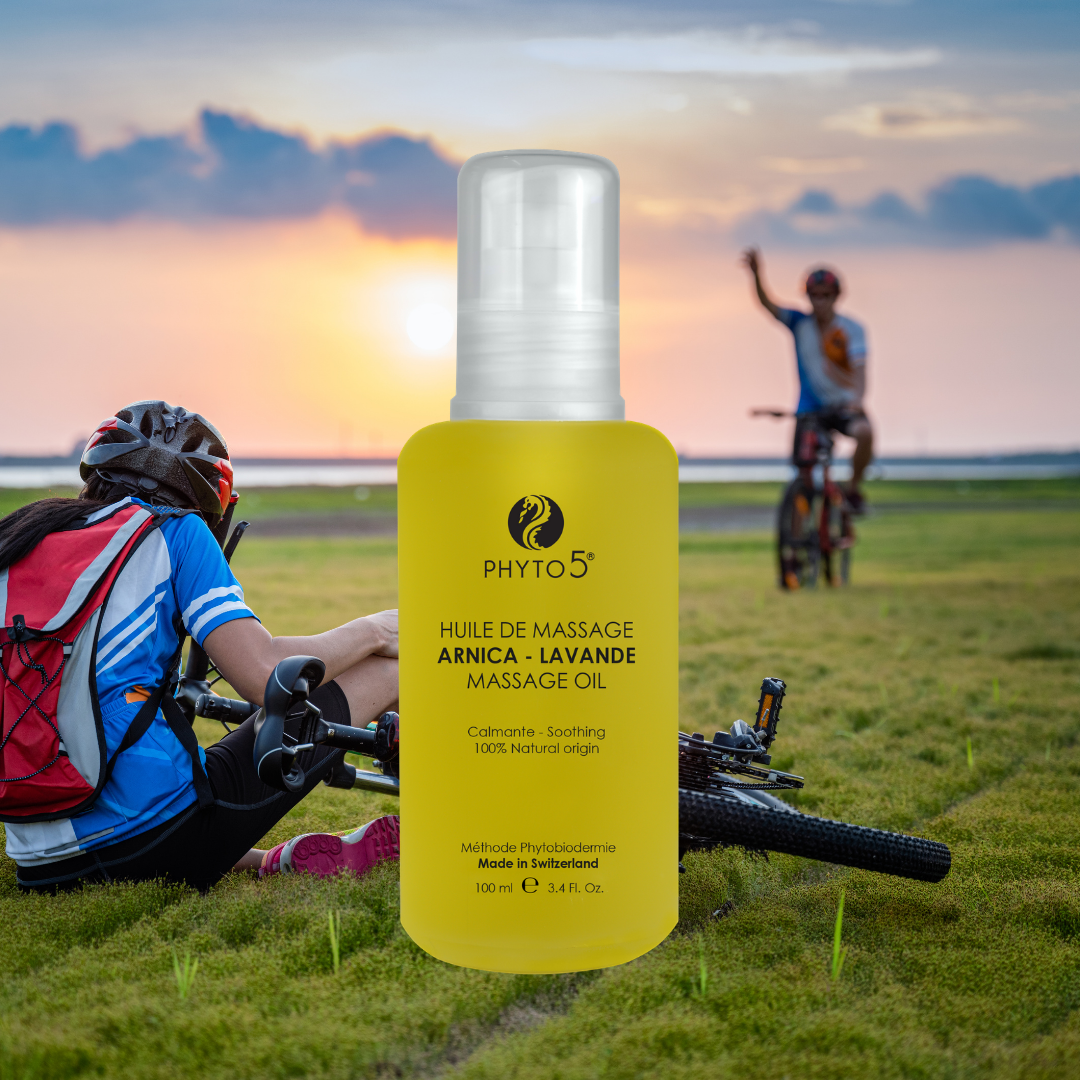Arnica montana extract, the principle unique ingredient in PHYTO5’s Arnica-Lavender Massage Oil is derived from the medicinal Arnica flower of the aster family. It’s used for soothing pain from injuries, accidents, and for relieving rheumatic muscles and joint pain. Arnica also stimulates skin’s complexion and has been used for centuries to soothe irritated skin while moisturizing dry skin.
For centuries, arnica has been a staple in folk medicine in North America, Germany and Russia. More than 100 prescription drugs are today derived from arnica in Germany alone. Indigenous North Americans prepared a tea from its roots to ease back pain and in Russia, arnica preparations were indicated to treat wounds, black eyes, sprains and contusions. They also used herb itself for uterine hemorrhage, myocarditis, arteriosclerosis, angina pectoris, and cardiac insufficiency.
Twelfth century polymath and healer Hildegard von Bingen, a German nun known for her intimate understanding of nature and physiology, recorded her observations about the wide range of healing properties of the Arnica montana plant.
Arnica brings relief to discomfort and pain experienced by all sorts of lifestyles, including aching athletes, children, yogis and weary travelers.
“Arnica, also known as Arnica montana, is the most loved and the most widely used remedy in all of homeopathy. It could even be said that it is the success of Arnica that has led to the success of homeopathy.”
Current Health Enhancing Uses for Arnica Today
Adding a few drops of arnica tincture* to warm water for a foot bath may relieve fatigue and soothe sore feet.
Hair rinses prepared with the extract have been used to treat alopecia neurotica, an anxiety condition leading to hair loss.
Hair tonics formulated with arnica work to combat dandruff.
Homeopathic arnica is ingested to relieve vertigo, hoarseness, seasickness, swelling from injury, pain and muscle soreness.
Arnica can be used as a natural antibiotic.
Arnica is excellent for jet lag and for transient insomnia caused by overexertion or stressful events. It is non-habit-forming.
The herb can be used to relieve stiffness from flying or long-distance driving.
Many therapists give arnica to their patients post-surgery to help alleviate residual pain.
Arnica soothes playground bumps and bruises.
Arnica’s Properties Make It An Ideal In Massage and Pain Therapy
analgesic
anti-inflammatory, calming, soothing
formative and reparative of tissue
anti-bacterial
antioxidant
anti-fungal
antitumoral
immunomodulatory**
healing acceleration
relaxation
Common names for Arnica montana include leopard's bane, mountain tobacco, mountain snuff, and wolf's bane.
#####
*Arnica can be toxic when consumed in large quantities; only highly diluted homeopathic preparations are considered safe for ingestion. In some individuals, arnica may also cause rashes and contact dermatitis due to its helenalin content. Prolonged exposure to this allergen has been reported to cause blistering, skin ulcers and surface necroses. Arnica should never be applied to open wounds.
** Encouraging homeostasis or balance in the immune system
#####
https://www.encyclopedia.com/plants-andanimals/plants/plants/arnica
https://www.tandfonline.com/doi/abs/10.1080/15569527.2020.1743998
http://www.paolobellavite.it/files/322_2020-HomeopathyFN1Arnica_1zchz70u.pdf
Anderson, Rachel Grabenhofer and Katie. “Jar Deconstructed: Arnica.” Skin Inc., www.skininc.com/skinscience/ingredients/Jar-Deconstructed-Arnica-573900821.html?utm_source=newsletter-html&utm_medium=email&utm_campaign=SI%2BE-Newsletter%2B03-04-2021&absrc=img.
Elston, Ruth. What Is Arnica? Why Arnica Montana Is the #1 Bestselling Homeopathic Remedy in the World. Better Life Books, 2012.
US;, Kriplani P;Guarve K;Baghael. “Arnica Montana L. - a Plant of Healing: Review.” The Journal of Pharmacy and Pharmacology, U.S. National Library of Medicine, pubmed.ncbi.nlm.nih.gov/28401567/.

